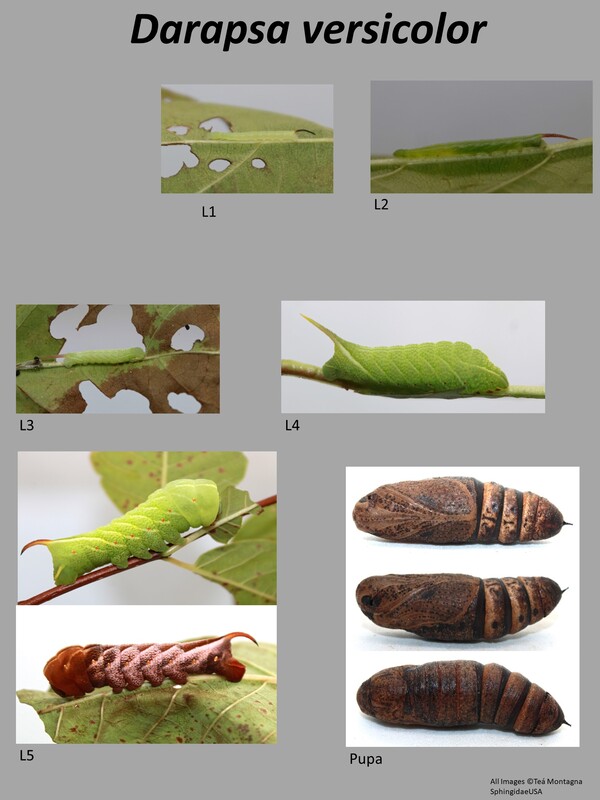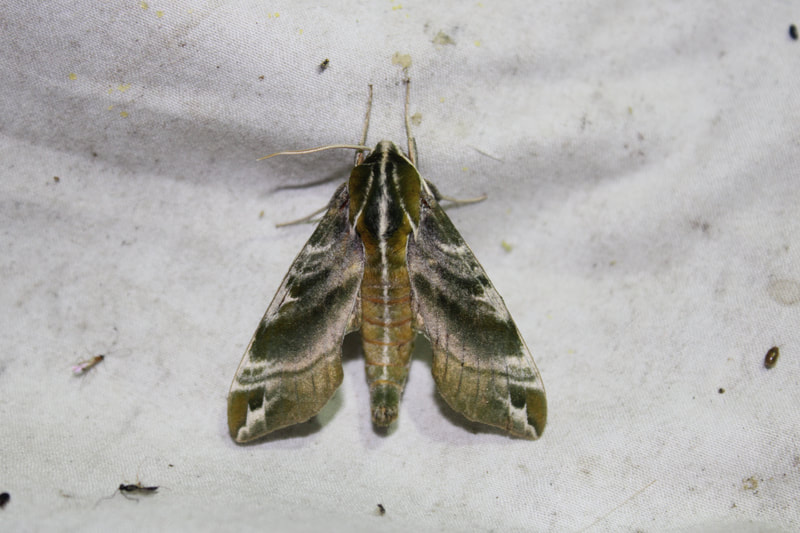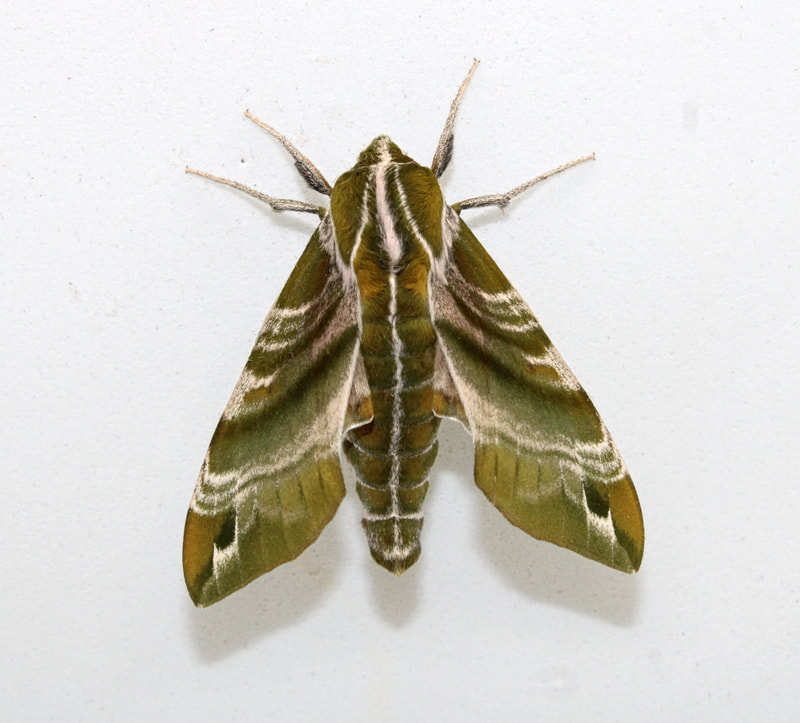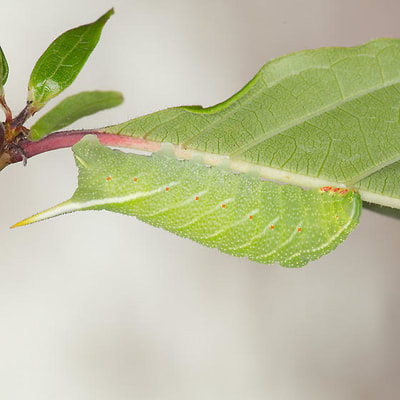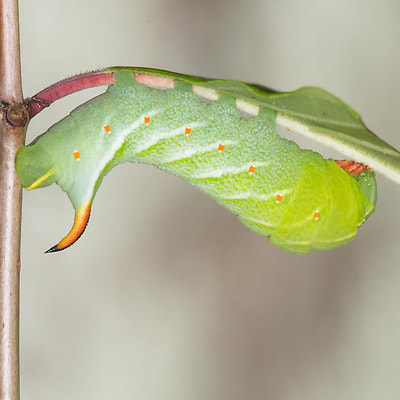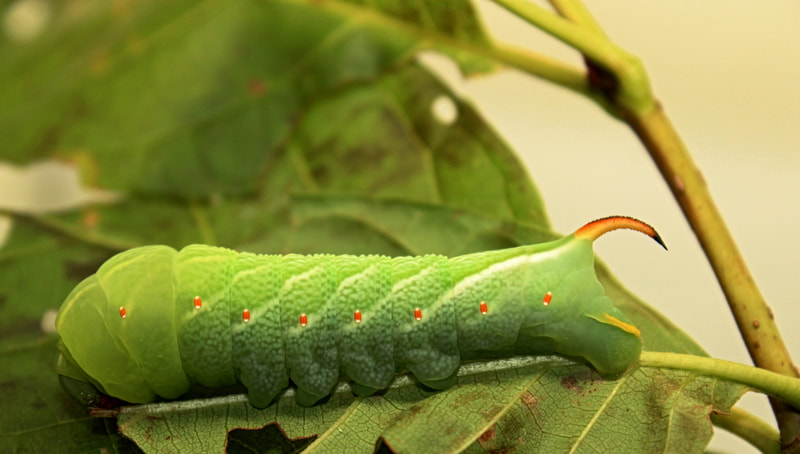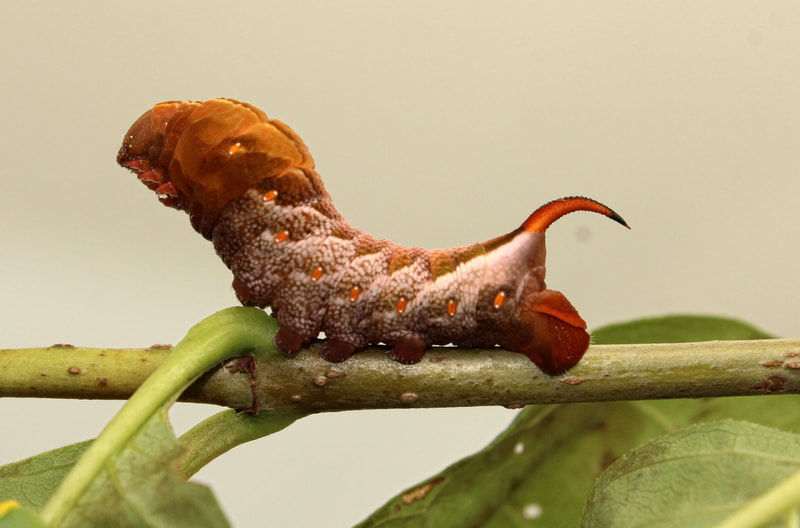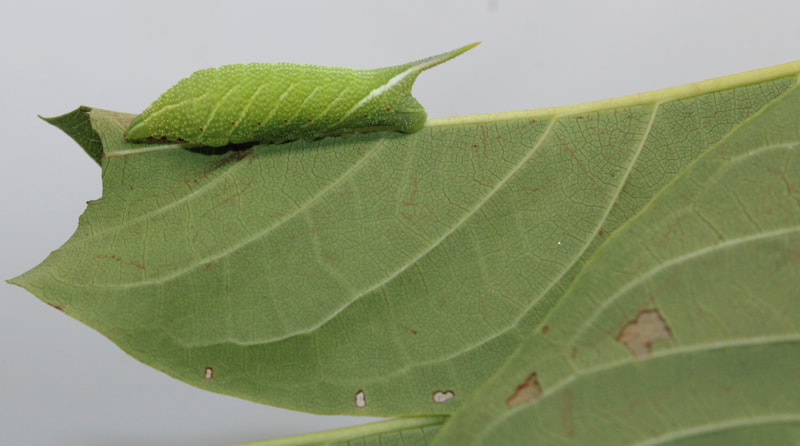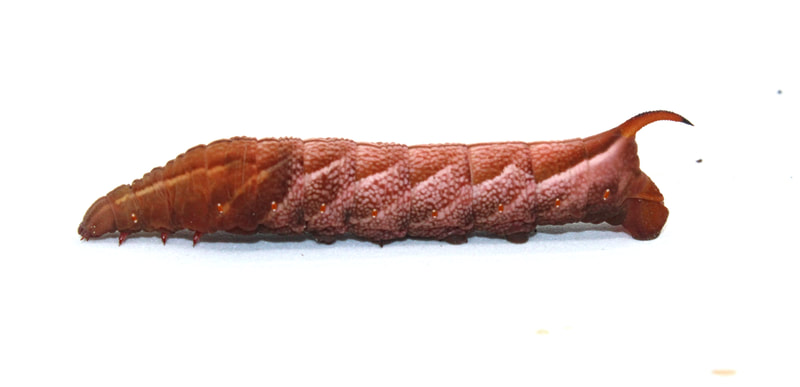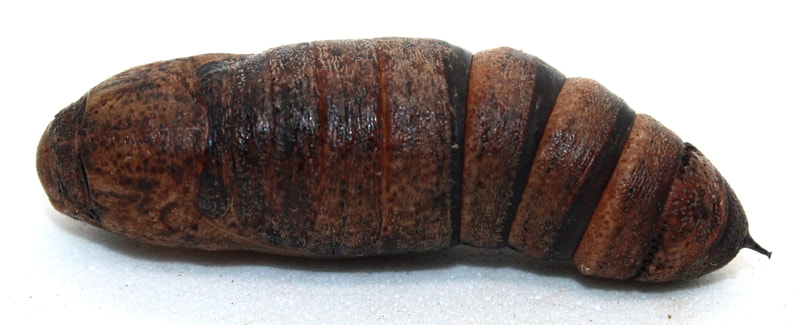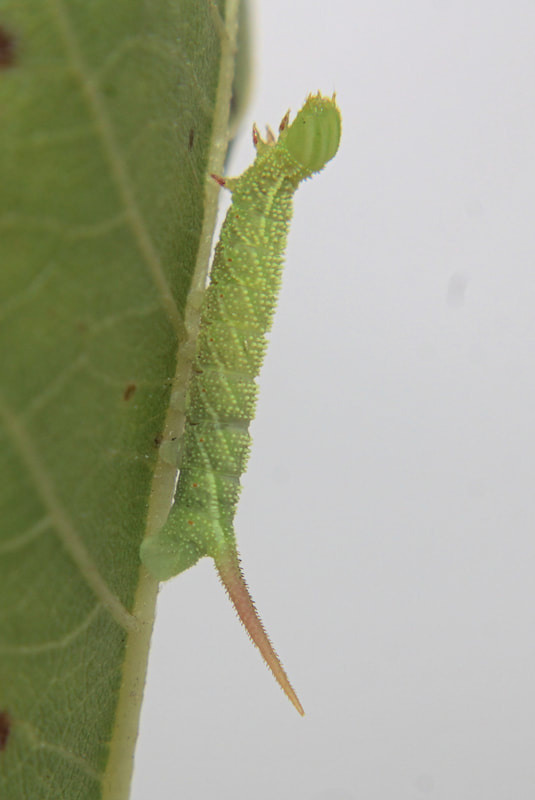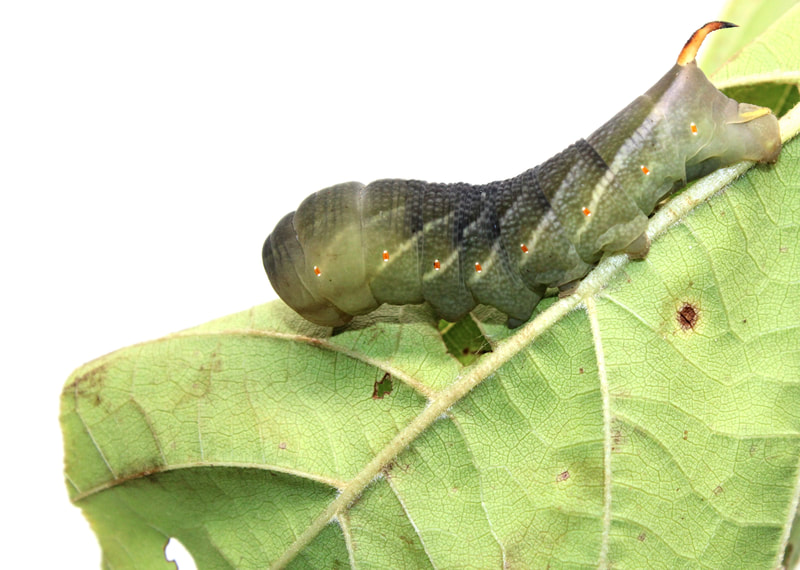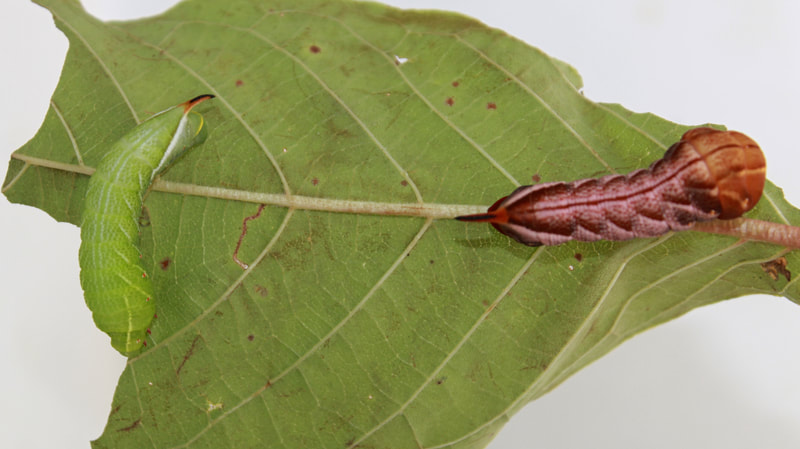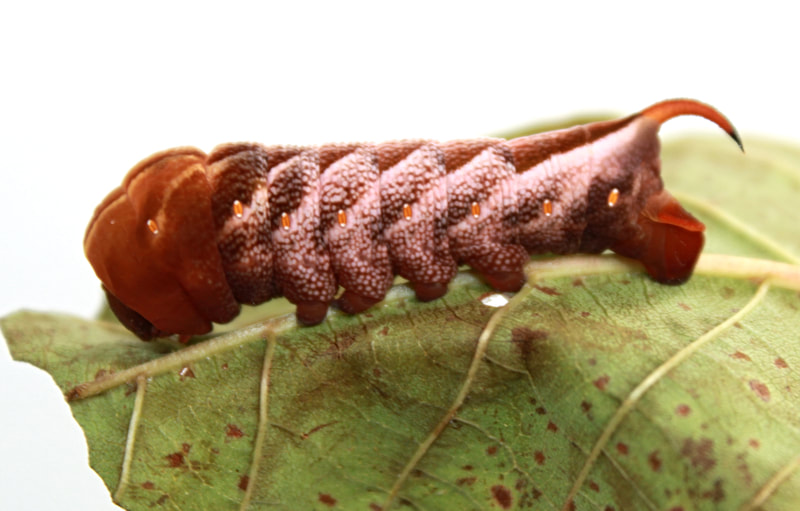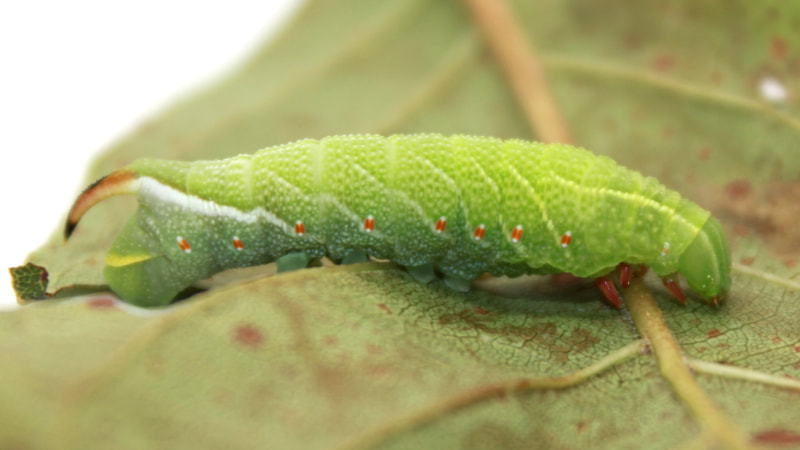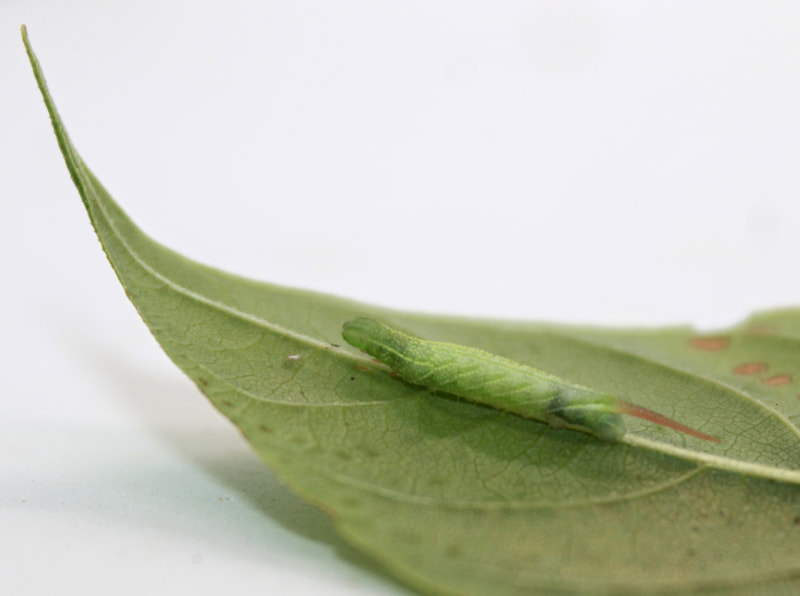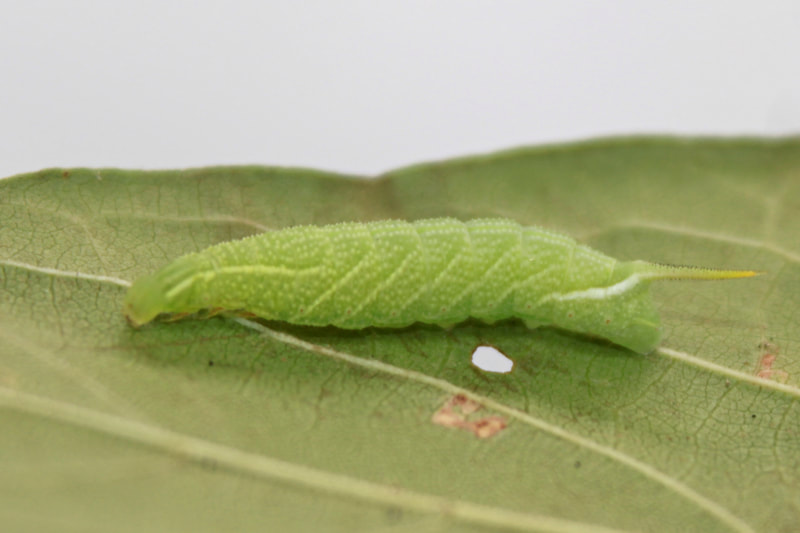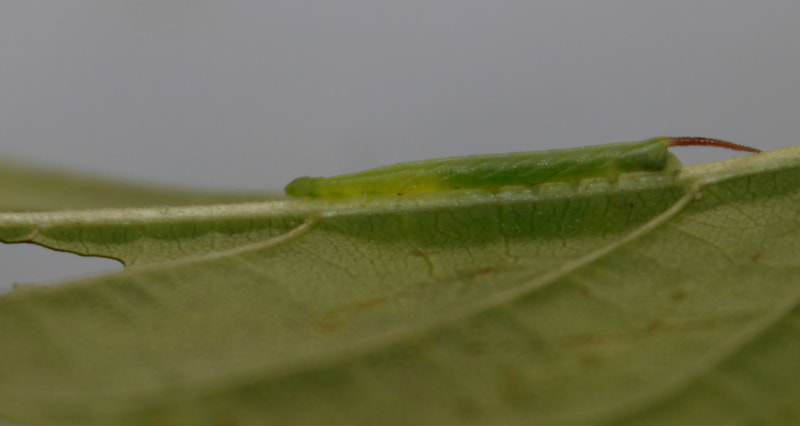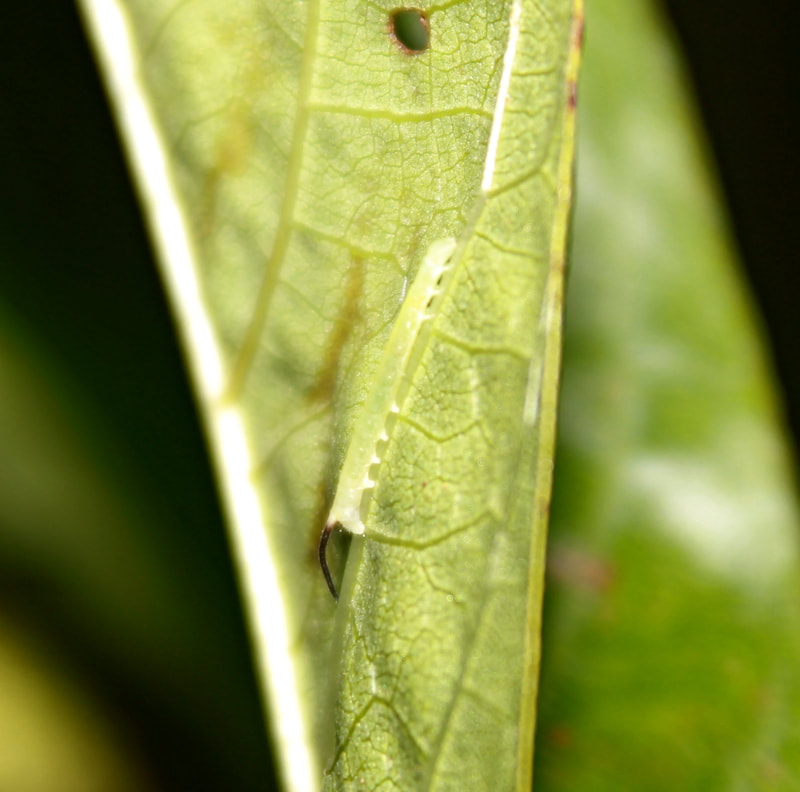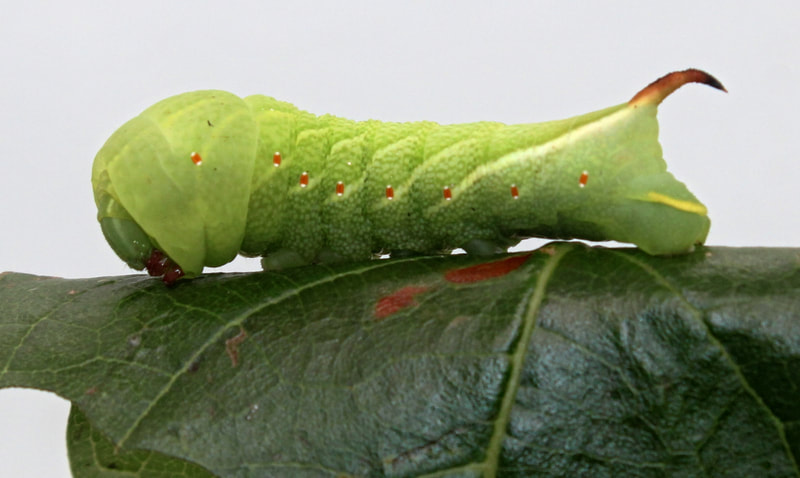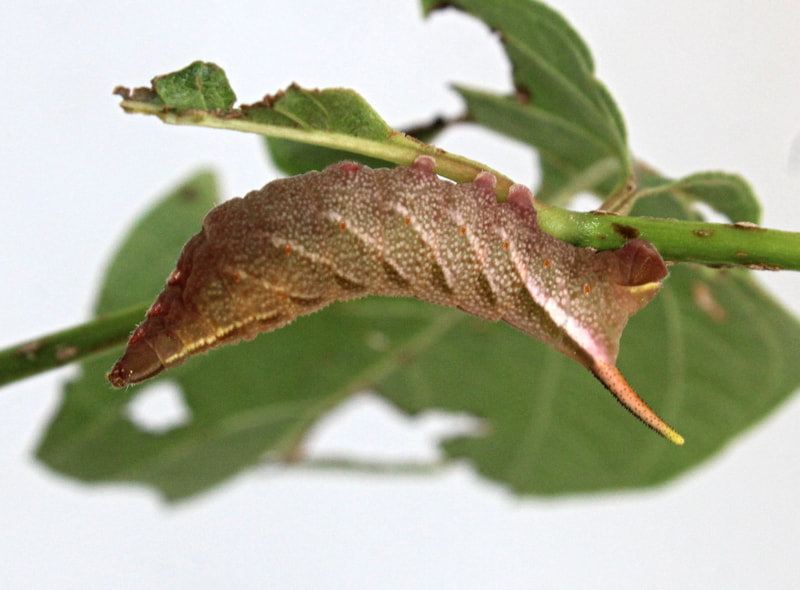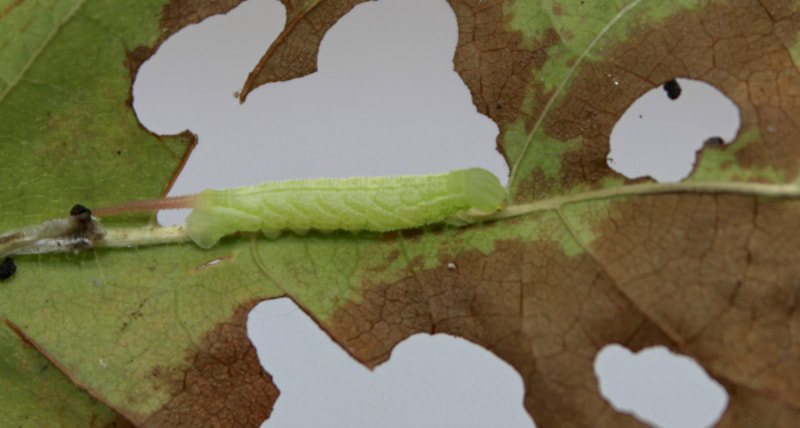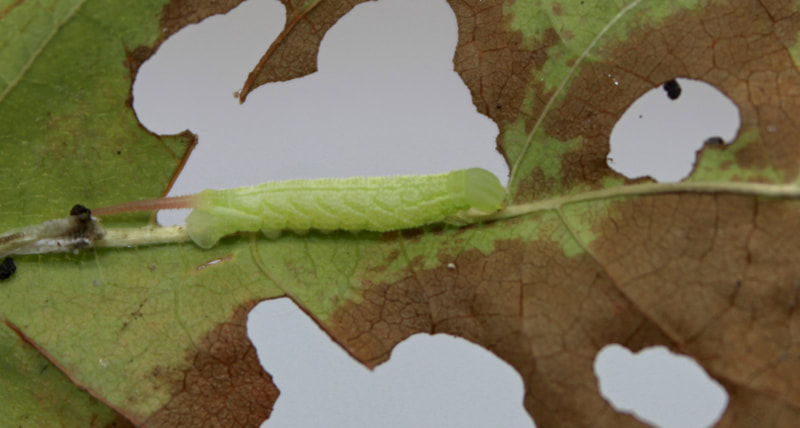|
Common Name(s): Hydrangea Sphinx
Ecology and Life History: This moth flies throughout the summer months in the Northeast, having 1-2 broods. In the South this moth flies throughout the warm period, having many more broods and being present nearly year-round in certain areas. This species is attracted to light, but it doesn’t appear to be heavily attracted to light. Males will show up at light significantly more often than females. This moth has been caught at bait, and nectaring at flowers. Since its hostplants are heavily associated with water, and are often growing in water or quite close to it, the females likely deposit eggs on leaf tips farther up the plant. Larvae feed on the undersides of leaves. Pupation occurs in the soil, with the larva spinning a loose cocoon. Habitat and Searching for Larvae: This moth is an inhabitant of wetlands, swamps, marshes, rivers, and bogs where it’s water-loving hostplants Cephalanthus occidentalis, Hydrangea arborescens and Decodon verticellatus are found. Larvae feed similarly to other Darapsa species, on the underside of the leaf. Locating L3 and above larvae can be done by searching for half eaten leaves during the day, the larvae rest along the midvein. Larvae feed at night, wandering the plant and consuming entire leaves. They tend to feed starting at the leaf tip and working their way down, leaving just a petiole. Locating final instar larvae can be done by looking at branches of hostplant with All adults and larvae recovered by the authors of this website were found in marshy areas or along the side of ponds/rivers. Older larvae defoliate branches and leave noticeable damage. The larvae of this species do fluoresce under UV light, which makes finding them at night easier. Rearing Notes: This species is exceedingly easy to rear in captivity. Larvae and cut host do especially well in tupperware containers. If using Cephalanthus occidentalis as a host, it keeps extremely well in sealed tupperware. Growing larvae on a plant is easy as well, but requires attention when they are large enough to pupate. A final instar larva will easily defoliate a small plant. Larvae will feed on new or old growth, showing no preference. Older larvae consume large quantities of vegetation and will defoliate branches. Larvae pupate in a silken cell on the soil surface/leaf litter, or just under the soil. The pupae are usually covered by a large amount of dead leaves when they’re not totally underground. Younger larvae will feed sparingly, seemingly only at night. This species can tolerate humidity well, but does not like it dry. Removal of frass is encouraged from rearing containers as it molds quickly. Adult description: Arguably one of the most gorgeous Sphingidae in the Northeast. This is a medium sized moth with forewing length of 32-38mm (2). The green forewings with intricate white streaks that repeat on the thorax and abdomen immediately separates it from other members of the genus as well as most species in the continental USA. The hindwings of this species are a deep red-orange color that contrasts beautifully with the forewings. Host plants: Click here to load this Caspio Cloud Database
Cloud Database by Caspio |
Larval description:
L4: A small green larva. It looks quite inconspicuous. The larva has small white bumps on its body giving it a granulose look. It is not rough to the touch. The green-yellow horn is lightly granulated. The spiracles are noticeably red and contrast nicely with the bright green larva. There are a pair of white dorsal stripes over the thoracic region that seem to extend from the head capsule. The last white abdominal streak is thick and white, extending to the horn. Like other Darapsa, the larvae can retract their head and thoracic segments into the enlarged region on their abdominal segments. L5: This is a medium, typically green larva, that also has a reddish-orange form. The larva has bright red spiracles and 6 faint white streaks surrounding each spiracle. The last white streak extends to the orange horn, which angles backward. There is a noticeably enlarged region on the first few abdominal segments. This allows the larva to retract its head and thoracic segments, making it appear more stout than it is. This is the plainest larva in the genus, with really only the horn, spiracles and anal dash giving it any color. The orange form is more colorful, but overall fairly plainly marked. It is most easily separated from the other members of its genus by hostplant or by horn color. |
The gallery to the left contains photos of Darapsa versicolor adults. If you have a photo that you would like to submit to us, please contact us.
The gallery to the right contains photos of Darapsa versicolor larval and pupal stages. If you have a photo that you would like to submit to us, please contact us.
The gallery to the right contains photos of Darapsa versicolor larval and pupal stages. If you have a photo that you would like to submit to us, please contact us.
|
|

